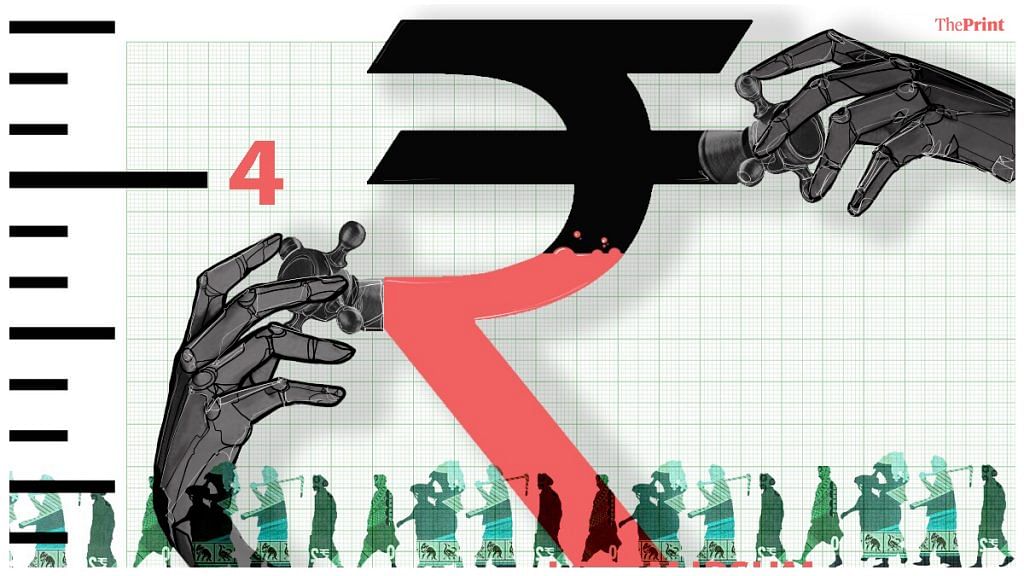A key concern about the Indian economy in the last few months has been inflation, which has been consistently above the monetary policy target of 4 per cent. This volatility in inflation was due to supply side disruptions caused by the lockdown. After the economy was opened up, supply shortages and logistical issues were eased and prices settled back. This behaviour of prices is reflected in recent inflation data. Our prediction is that when the January numbers come in, inflation will ease further.
Not only will lower inflation help to reduce the stress faced by households and firms, it will also help take the heat off the erroneous argument that the inflation targeting framework does not work in India. After the recent blip in inflation, many economists started arguing that the inflation targeting framework should be thrown away; some feared that higher inflation caused by short-term supply side bottlenecks due to the lockdown would lead to higher interest rates. This thinking is completely flawed. Not only was the spike in inflation temporary, since it was clearly caused by a short-term supply constraint, the Monetary Policy Committee, correctly, did not respond by raising interest rates.
Turning to the latest data, we see that Consumer Price Index inflation fell sharply to 4.59 per cent in December, from 6.93 per cent in November. The decline was mainly on account of a drop in food inflation, which fell to 3.87 per cent in December from over 8 per cent in November. The fall in food prices was driven by a collapse in vegetable prices — vegetable inflation contracted to 10.41 per cent in December, compared to 15.6% in November.
Also read: Retail inflation falling to 4.59% a big relief, gives RBI space to make policy that supports growth
Need to use seasonally adjusted data
One of the difficulties in understanding inflation in India, in contrast to other countries, is the lack of seasonally adjusted inflation data from official statistical authorities. Official government data publishes inflation as the year-on-year percentage change in CPI. The year-on-year change measures, for example, the percentage change in inflation in December 2020 as compared to December 2019. Standing in December 2020, an inflation of 5 per cent means that if the CPI was 100 in December 2019, it would be 105 in December 2020.
This year-on-year data misses trends in prices. These can be captured by looking at month-on-month changes or point-on-point changes (POP) in inflation. In terms of monthly data, each observation of a one-year change in inflation is the average of the last 12 values for POP inflation. More recent information about inflationary pressures can be obtained using the POP method.
However, month-on-month changes need to be adjusted for seasonal fluctuations. If there is seasonality in the data, it might suggest that there is a rise in prices and policy action is needed, but that would be a mistake. For example, a rise in prices of mangoes when their season ends should not cause alarm. The price of mangoes will come down in the next season.
This feature of the data is addressed by seasonally adjusting monthly price levels. The techniques to adjust the data for seasonality are nearly a hundred years old, and find wide applicability in advanced economies. The statistical departments of advanced economies release seasonally adjusted data along with the raw data. These are then used by governments and central banks for framing policy responses.
Also read: Inflation targeting has worked for India, it is one of Modi govt’s defining achievements
Month-on-month look at FY2020-21
A study at NIPFP applies standard seasonal adjustment procedures in order to obtain a month-on-month seasonally adjusted monthly time series of inflation in India. The study shows that this series gives us early trends for year-on-year inflation.
What do the recent values of month-on-month seasonally adjusted inflation tell us? In April 2020, the first month of the lockdown, the month-on-month inflation rose sharply to 21.7 per cent. This could have been caused by supply side disruptions during the lockdown.
Since then, the numbers have shown a sharp fall, reflecting the slump in consumer demand due to the lockdown. In May 2020, the month-on-month seasonally adjusted inflation contracted to 6 per cent. Barring the months of September and October, the month-on-month inflation has remained benign.
The average month-on-month inflation from May to December comes to 4.05 per cent. This is a comfortable inflation number for the economy. Had there been no supply side disruptions, the average month-on-month inflation number would have been even lower.
Also read: Relaxing inflation target for growth isn’t necessarily good, Modi govt must assess idea well
RBI’s push for status quo
The RBI’s Monetary Policy Committee cut interest rates by 115 basis points and has rightly maintained a status quo on rates since August 2020. The MPC could have responded to rise in prices by raising rates, but it views the rise in inflation in recent months as largely due to supply side disruptions. It has also reiterated that it will maintain an accommodative stance so long as necessary to revive growth and address demand contraction.
The fall in inflation led by a sharp fall in food prices in December shows that supply side pressures are easing. The RBI is likely to maintain a status quo on rates so long as demand remains subdued.
Ila Patnaik is an economist and a professor at National Institute of Public Finance and Policy.
Radhika Pandey is a consultant at NIPFP.
Views are personal.
Also read: With inflation set to moderate, RBI could go back to easing interest rates again
